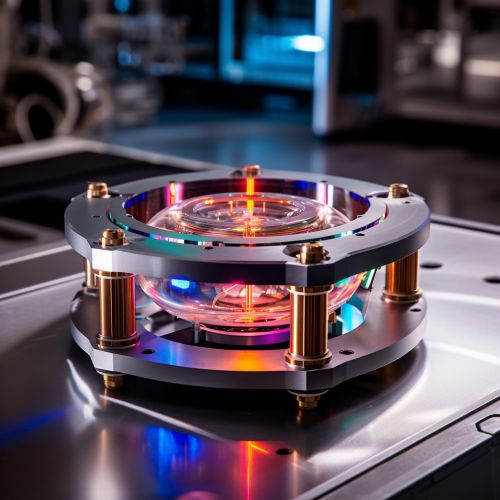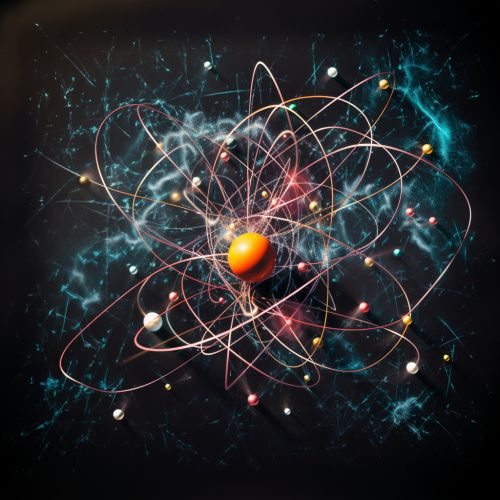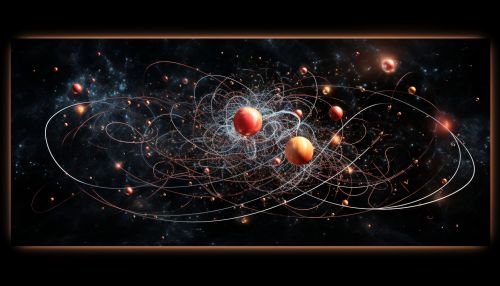The Physics of Quantum Mechanics in Quantum Metrology
Introduction
Quantum mechanics is a fundamental theory in physics that provides a description of the physical properties of nature at the scale of atoms and subatomic particles. Quantum metrology, a subfield of quantum mechanics, uses quantum phenomena to achieve highly sensitive and accurate measurements. This field has been instrumental in developing standards for physical quantities and improving the precision of time and frequency measurements.


Quantum Mechanics
Quantum mechanics is a branch of physics that deals with phenomena on a very small scale, such as molecules, atoms, and subatomic particles like electrons, protons, and photons. It is a fundamental theory in physics that describes how these particles behave and interact with each other. Quantum mechanics differs from classical physics in that it introduces the concept of quantum superposition, which allows particles to be in multiple states at once, and quantum entanglement, which allows particles to instantaneously affect each other regardless of distance.
Principles of Quantum Mechanics
The principles of quantum mechanics are based on the wave-particle duality of matter and energy, the uncertainty principle, the principle of superposition, and the principle of quantum entanglement.


Wave-Particle Duality
The concept of wave-particle duality asserts that all particles exhibit both wave and particle properties. A central concept of quantum mechanics, this duality addresses the inability of classical concepts like "particle" and "wave" to fully describe the behavior of quantum-scale objects.
Uncertainty Principle
The uncertainty principle, formulated by Werner Heisenberg, is one of the core principles of quantum mechanics. It states that the more precisely the position of a particle is determined, the less precisely its momentum can be known, and vice versa. This is not a statement about the limitations of a researcher's ability to measure particular quantities of a system, but rather about the nature of the system itself.
Superposition
Quantum superposition is a fundamental principle of quantum mechanics that holds that a physical system—such as an electron in an atomic orbit—exists partly in all its particular, theoretically possible states simultaneously. However, when measured, it gives a result corresponding to only one of the possible configurations.
Quantum Entanglement
Quantum entanglement is a physical phenomenon that occurs when a pair or group of particles interact in ways such that the quantum state of each particle cannot be described independently of the state of the other particles, even when the particles are separated by a large distance.


Quantum Metrology
Quantum metrology is the study of making high precision measurements using quantum mechanics. It exploits quantum phenomena to surpass the precision and accuracy that can be achieved through classical methods. It has been instrumental in developing standards for physical quantities and improving the precision of time and frequency measurements.
Principles of Quantum Metrology
Quantum metrology is based on the principles of quantum mechanics, such as superposition and entanglement, to achieve highly sensitive and accurate measurements. The two main strategies in quantum metrology are quantum parameter estimation and quantum hypothesis testing.


Quantum Parameter Estimation
Quantum parameter estimation is a method used in quantum metrology to estimate the parameters of a quantum system. This method uses quantum states, quantum dynamics, and quantum measurements to estimate the parameters with high precision.
Quantum Hypothesis Testing
Quantum hypothesis testing is another method used in quantum metrology to distinguish between two or more quantum states. This method is based on the principles of quantum mechanics and statistical hypothesis testing.
Applications of Quantum Metrology
Quantum metrology has a wide range of applications in various fields, including physics, chemistry, biology, medicine, and information technology. Some of the main applications of quantum metrology include time and frequency measurements, magnetic field detection, temperature measurement, and gravitational wave detection.


Time and Frequency Measurements
Quantum metrology has significantly improved the precision of time and frequency measurements. Atomic clocks, which are based on the principles of quantum mechanics, are currently the most accurate timekeeping devices.
Magnetic Field Detection
Quantum metrology is also used in magnetic field detection. Quantum sensors, which use the principles of quantum mechanics, can detect extremely small changes in magnetic fields.
Temperature Measurement
Quantum metrology can also be used for temperature measurements. Quantum thermometers, which use quantum states of a system to measure temperature, can achieve high precision and accuracy.
Gravitational Wave Detection
Quantum metrology is also instrumental in the detection of gravitational waves. Quantum-enhanced interferometers can improve the sensitivity of gravitational wave detectors, allowing for the detection of smaller and more distant astronomical events.
Conclusion
Quantum metrology, a field that uses the principles of quantum mechanics to achieve highly sensitive and accurate measurements, has a wide range of applications in various fields. Its principles and methods, such as quantum parameter estimation and quantum hypothesis testing, have significantly improved the precision and accuracy of measurements in physics, chemistry, biology, medicine, and information technology.


